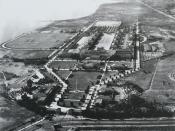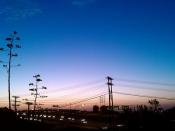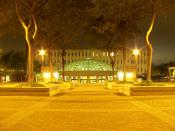Deborah Butterfield, (1949- ), American artist, whose sculptures of horses have provided a means for her experiments with different materials and approaches to sculptural form. Her many sculptural incarnations of the horse express subtle variations of pose, gesture, emotion, and metaphor.
Butterfield started making life-sized horse sculptures in 1973, toward the end of the Vietnam War. She saw the mare as a symbol for patience, intuition, strength, and affirmation of life, standing in opposition to the destructive impulses of war. She also wanted to change the association of horse sculptures with portrayals of military officers on horseback, waving swords or flags. Each of Butterfield's horses expresses a different kind of energy. She constructed one series of horses from mud and sticks, as if the animals had formed themselves from debris in the wake of a flood. An example from this series is Dry Fork Horse--Resting (Cara) (1977, Whitney Museum of American Art, New York City).
Another series, begun in 1979, includes see-through horses made from a variety of found materials, such as steel, wood scraps, and rolls of barbed wire. A representative example from this series, Scrap Iron (1981, private collection, Woodside, California), looks like a jumble of metal rods and bars, except for the subtle but sure lines that define the sitting horse's neck, jaw, spine, bent hindquarters, and extended forelegs. Butterfield has said that horses only sit when they feel secure, and that she likes the image of a gallery full of sitting horses because it is an image of vulnerability and strength at the same time.
Born in San Diego, California, Butterfield studied at San Diego State University from 1966 to 1968 and at the University of California at San Diego in 1969. She then transferred to the University of California at Davis, where she...


